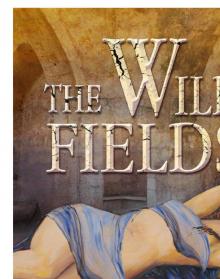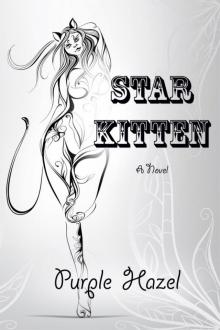- Home
- Purple Hazel
Star Kitten Page 27
Star Kitten Read online
Page 27
Captain Razorback just figured they'd go get it out of their systems for a while and then be ready to head back home with the rest of the crew in a few weeks. And it was only fair since the humans and Pumalars were essentially doing the same thing, getting back to nature out on the beaches of the island. Why not just let them roam, he figured?
Problem was, the Zorgs soon found themselves going from hunter of small rodents and mice to becoming targeted prey themselves! No one thought of it at the time, but the Zorgs out there in that jungle alone; not even staying together in packs but hunting alone day and night? It was a recipe for disaster. Wild Cassowaries were nearly as big as the Zorgs themselves; and soon the giant birds were actually… hunting the Zorgs as food! Maybe it was their Zorg odor, but no one ever really figured it out as to why. Roaming individual Zorgs scurried into the trees and deep dark jungle for days living like ancient Lizards. No one knew where they were; and no one heard anything more from them either. But when weeks passed and not a single Zorg had returned; human Cassowary hunters occasionally began stumbling across carcasses of dead Zorgs which had clearly been pounced upon by something really big… and then eaten alive!
The Cassowaries were quite girthed in the torso, and had flightless wings which covered their muscular breast but didn't expand much. They didn't need to either. Their legs were quite strong enough to allow the giant birds to sprint, spring forward, or jump up to catch fleeing prey. Their horned bill at the front was adept at grabbing and tearing meat too; and their neck was strong enough to enable their head to hammer down on an opponent—turning their bill into a lethal weapon when fighting with a rival rooster (or when goring a victim). They were omnivores basically; and their meal of choice had always been small jungle lizards or rodents; but they loved to feast on fruits or wild corn too; which grew in the Porkonji plantation field. This helped with their digestion. Yet now... here were all these plump four to five feet tall lizards: slow moving, meaty and thick around the belly. Easy to spot, too.
It was just so unfortunate for the Zorgs. Of the eighty-seven who struck out from the Warthog that first week to go live like ancient lizards in the jungles, only two were ever found alive again; and both of them died a few days later after being discovered... picked at and gored practically to pieces by the giant birds.
By way of comparison, the Porkos from the ship's crew just stayed with the ship and enjoyed living in the interior of the island. Beaches didn't interest them anyway. What Porkos liked was mud! Whole acres of muddy swamps were theirs for the taking; and each morning the rains fell to soak the ground and give the happy pig-like beings a soothing mud bath to start their day. After that though, they pretty much spent their days studying the crops and fields of their former brethren who'd tried farming there; and gathering fresh food to eat. The wild corn growing... it had amazing nutritional value, they found; and the seeds collected from the harvested corn were predicted to be a wonderful addition to the New Australian diet when they returned. Other than that for the Porkos, the island was just a quiet relaxing escape from the harsh life most had endured all those years in the mines.
In time though, the weeks had passed; and there'd been no sign of Star Fleet at all. No inter-space communications traffic to indicate anything was going on nearby. No galactic dragnet hunting for Pirates was being spoken of on the inter-space channels. Basically it seemed there was no reason to hide out there any longer really. Probably it was about time to just head on home. On top of that, ship indicators were detecting a massive storm system brewing up on the planet; and absolutely no one wanted to be caught on this island in the event of a hurricane—least of all Captain Razorback.
It was just a fact of life for this beautiful island paradise and really no way around it. Just like the previous colonists who'd struggled and fought to make a living here, the Nausties were going to have to flee the coming storm or face their own ruin. Once the field flooded that their ship was set upon, they'd have a devil of a time firing their propulsion jets which were designed to lift the craft into orbit. In the end, only the big island birds would reign over this tropical world. Only they could endure the ravages of a hurricane and live to see their descendants flourish there. The Nausties, despite all their ingenuity and technology, were comparatively ill-prepared for such a debacle.
Razorback traveled out to Vlad's private hut and awoke him one morning with the news, saying basically, "General, if you please... storm's a brewing. This is hurricane territory, as you may recall." Phillip set out a tray of freshly-gathered jungle fruit for Vlad and his guest. Razorback thanked him, then continued, "We'd better get the troops and crew on board and get off this planet. I've no ambitions of becoming a Submarine Commander, you know?"
Vlad just rolled out of his hammock and rubbed his head chuckling groggily, "Yes, I guess all good things they must come to an end, my Captain. We knew this would happen eventually.” He reached over and grabbed an open vodka bottle; then guzzled down half of it, saying afterward, “It’s just rainwater that Phillip brought me this morning.” Razorback snorted humorously. Vlad gave that famous smirking smile of his; then wiped off his mouth with the back of his hand adding professionally, ”I'll order my men and the prisoners on board immediately."
Razorback snorted in a nodding reply, "Yes General, thank you... and we leave at dusk by the way, for New Australia...."
Chapter 19:
The Order of Heroic Merit
Meanwhile back on New Australia with the entire fleet having gone raiding; there were lots of exciting new changes going on. Big plans were afoot... in anticipation of their warriors’ triumphant return with hundreds and hundreds of fresh, new females.
Slart Planners and scientists had been working the past month devising and designing a brand-new domed solar farming facility; which would span across the desert surface and cover a five square mile area just like the old main terminal dome which had already been converted mostly to solar farms. Solomon liked the idea; and had them compile a report on all the numbers, figures, projected completion, and building material requirements for the construction. Then he had his staff calculate projections on the food needs of the planet over the next five years, the next ten years, and even the next twenty years. With all this data he and his staff concluded what needed to be done. Farm production would still need to pentuple for New Australia to ever gain self-sufficiency.
So far, they'd already begun construction on a new terminal facility on the planet surface which could garage ships that had landed but needed refurbishing or repairs while other ships could continue to use the loading bay. This had been a big problem in the past with ships occupying the loading bay for weeks while other ships had to land on the forbidding surface and await their turn to offload. This new facility was a massive three-sided building with an ingenious sloaping roof to ward off sand storms. It was going to have a gigantic roll-up door which sealed workers and spacecraft inside to work throughout the night; and make Solomon's terminal operations far more efficient. Though construction was extremely difficult on the planet surface, Porkonji work crews adapted quickly and Earther craftsmen aided their efforts working mostly at night wearing protective clothing and breather suits to erect the basic structure of the facility. Nausties were now confident they could construct permanent buildings on the planet surface.
Therefore, at the next meeting of the Tribal Confederation, Solomon (now functioning as delegate to the assembly from the Schpleeftkorkii tribe) motioned for the creation of a developmental committee to explore the possibilities of creating a network of not just one, but eventually FIVE massive domed solar farms. All would be accessed via the Service Tunnel network below the surface. All would be in dimensions of about five square miles. And all would be glassed over with tinted panes, irrigated from glacier water below, and farmed by generations of future Nausties.
To each delegation, Solomon’s staff passed out drawings of the new proposed facilities, along with detailed descriptions of their amenities and specif
ications. Solomon described the farm complexes to everyone in the audience of fifty Chieftains and their staffs, as they read along or perused the artists’ renderings.
Massive shudders would cover the glass roof too; so that in the event of a sandstorm, the facilities could lock up tight and endure the ravages of the wind. Slart engineers designed the concept as well as the mechanism for operating them from inside the facilities. Basically these solar farms would be nothing but giant reinforced greenhouses, but with a few differences. There'd be small dormitory facilities attached to them to house laborers; and the fields inside would be hydrated via a pipe and hose system that would pump water up from the planet's glaciers below into a reservoir located inside the new building.
The entire facility would be airtight and fresh oxygen would be pumped in from an oxygen generation plant constructed for each location. These oxygen plants would actually make their own oxygen—from water—by a process called electrolysis. Electric current generated from solar panels on the roof, would pass through water from one positively-charged electrode called an anode to another negatively-charged electrode called a cathode. A small concentration of salt in the water would conduct electricity. In the process, water would split into hydrogen gas and oxygen gas. Hydrogen gas would be pumped out of the airtight facility and expelled through hoses; while the oxygen gas would be circulated inside. The plants growing inside would complement this process of course, by giving off their own oxygen as a natural byproduct.
As Solomon observed next in his presentation, the latest population estimates on New Australia were at about 84,312 beings from six different species. This first census of the planet had been accomplished by requesting reports from each tribe of its known membership—including female slaves. And the population was soon to be growing, he assured everyone in attendance. Already the mainly Schpleeftii tribes were starting to report pregnancies in their territories; even if other species were still not progressing toward repopulation currently. That said, Solomon pointed out that with (hopefully) thousands more females being brought back to the planet from Star Pussy, New Australia should begin looking to the future in terms of population growth; and the required feeding of its citizens.
Solomon concluded his speech thusly, “Food… as we all know… is what has always been both our problem on New Australia, as well as our solution to keeping the peace. Food is what drove us to fight for our freedom. Food is also what drove us into devastating Civil War. And now food is once again the key to our self-sufficiency as a planet. Therefore, we must see to the future of our home… see to the future of generations to come.”
The Tribal Confederation approved the measure easily, with only a few dissenting votes. And this was a vote that had to do with much more than just FOOD, after all. Most certainly, New Australia should begin preparing for the needs of an advanced society... a true civilization (even if the current status quo of being a warrior/pirate culture was still quite appealing to many on New Australia). Others could already see it now, just like Solomon did, that a rich new culture of cross pollination was developing. One that was enhanced by its own diversity of species; one that could not only survive but actually prosper and grow. New Australia—given a few generations of time to evolve—could perhaps become a microcosm of the galaxy itself (even if it was founded on a planet populated by former prison convicts).
Talk even arose later in the meeting about populating the surface itself! Building domed cities on the surface for Nausties to go up and live under tinted glass; enabling their offspring to grow up into adulthood being able to actually see and experience sunlight every day.
Of course, this would mean no more piracy; and some were diametrically opposed to that. To attain a level of civilization like this would mean piracy must cease. No one was actually saying it, but the implication was all too clear. Eventually, this part of Naustie culture (the warrior ideal… to always conquer and pillage) would have to end. Many had already begun to accept that as fact, and not just Slarts like Architeuthis either. Solomon, and the other intelligentsia of New Australia were a driving force in this new philosophy. Piracy and raiding were a temporary means to an end, more and more Nausties believed. Now it was time for New Australia to move forward from its violent past.
This latest raid…? It would have to be the last, and many felt that way. Several delegates expressed this; and Solomon was pleasantly surprised. So was Architeuthis. Not just for the sake of advancing the civilization either; but from a practical standpoint too. Raiding was risky. It was essentially a declaration of war on everyone and every planet in the galaxy. Being outlaws in an already dangerous galaxy—could only mean facing the wrath of the entire Interplanetary Authority someday. Everyone knew it, at least deep in their hearts. Criminal activity could only end up getting their planet identified as the origin of all the recent pirate raids… and putting them all right back in prison or getting them killed.
The next big step then? Begin TRADING with other planets. Yes, it would be difficult. First they’d have to make a foray into intergalactic trading via the shady and clandestine black market… then it would require diplomatic relations, and trade agreements with other planets. A delegation would need to be formed; and a diplomatic mission would need to be sent to Porkonji first; just to get things started. After that, maybe they’d try Zorgolong… eventually maybe even Pumalar. Solomon sat back and relished the debate going on in the Assembly that day. Heated at times, but very healthy, it took the pressure off him personally because it was after all Solomon himself who’d started New Australia’s foray into galactic piracy! It would be a lot easier for him to change his stripes now, since several delegates were already saying exactly what he'd been thinking all along.
The difference at this point was merely one of perceived strength in negotiations. When New Australia was fresh out of its rebellion; and its trade fleet consisted of nothing but the newly captured Anarchy, almost anyone could have taken advantage of them. Now, things were quite different. The shady characters in the black markets of Porkonji and Zorgolong would find out rather quickly that who they were dealing with was no one to be trifled with.
Once the Anarchy and the other ships returned from Star Pussy; this would need to be discussed further, it was decided, as the Assembly meeting adjourned. But meanwhile, Solomon had gained approval for his exploratory committee on developing a farming network on the surface. Construction could begin on the first dome within one year, it was decided. And it wouldn’t need much longer than that either, because the new facility being built to create a new surface shipping terminal... that was nearly complete already; and Porko construction crews were almost finished with its roof.
The first of the ships finally returned... about 43 days after it had left New Australia. However it was the Varanus—not the Anarchy (which everyone expected to return first). This ship carried the survivors of the Smilodon Brigade; and the dramatic arrival of this now greatly-diminished fighting force caused quite a stir. Everyone was quite concerned when seeing this first ship arrive with so many dead and wounded on board. But luckily for Solomon, General Bengal had thankfully survived. Otherwise, it would have looked to many Nausties like the mission had been a disaster!
Bengal’s condition, though pathetic, was a welcome relief to his tribe; and to the Terminal staff as well. After all it was they who had sent him on this mission in the first place and Bengal was still the Chieftain of the Smilodon tribe; which was one of the most powerful on the planet. Solomon heaved a sigh of relief at the news that Bengal had survived the battle; basically because he fully understood that to Pumalars, victory was far more important than casualties. And a victorious commander returning from battle: that brought great honor to his tribe.
In fact, once he got out of surgery (where Slart physicians removed almost another fist-full of projectile fragments) he became quite instrumental in bolstering the reputation of those who'd ordered him on the mission by describing the bravery with which his warriors fought. P
lenty on board who'd survived the mission or witnessed the action had told the stories; but when Bengal confirmed their accuracy, the whole population of New Australia was thrilled. It filled everyone with a sense of pride.
All the bodies of the slain were transported out onto the surface of New Australia; a few hundred yards from the main terminal. A giant pit was dug, about five feet deep using a huge bulldozer. Then at dusk, when the heat of the day was waning, nearly ten thousand Nausties rode out from the main terminal on assorted mining vehicles wearing hoods to protect themselves from the wind; or tried walking alongside the vehicles to the funeral site. Even the short distance was exhausting because of the thin oxygen—especially on the march back. But the Nausties all did their best to attend and even join in with the elaborate Pumalar ritual of singing repeatedly the names of all the slain.
Because there was no particular order or organization to this practice, the spontaneous wailing and moaning and crying out of all the names of the heroic dead rattled on and on for quite some time; even after the pit was set alight and the bodies all cremated. All those who'd fought with or knew the deceased were to sing his name—that was the tradition. However in the thin air, it was hard for them to sing out the names repeatedly, so during this dramatic mass burial, the thousands of warriors, farmers, female slaves, and miners in attendance just joined right in; repeating the names and creating a truly remarkable experience for everyone who'd attended that night. It really brought everyone together as a united culture of intelligent beings once again. It reminded everyone of who they all truly were, as a people.

 The Wild Fields
The Wild Fields Star Kitten
Star Kitten Morgana's Handmaid and the Creature of the Dungeon
Morgana's Handmaid and the Creature of the Dungeon Twin Paradox
Twin Paradox Twin Paradox_Book Two
Twin Paradox_Book Two